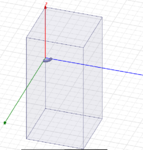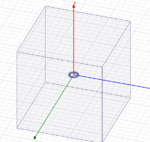yomiomolewu
Newbie level 4
I am trying to reduce the simulation time for my model, so I tried to apply symmetry boundaries. When apply the "Symmetry perfect E" and "Symmetry perfect H" to appropriate boundaries. I get a similar result compared to simulating the full problem domain. I do not have a port in my simulation so I applied Perfect E and Perfect H to the boundaries I initially applied Symmetry Perfect E and Symmetry Perfect H respectively. But I got a different result.
I would like to know what the difference is between using Symmetry Perfect E/Symmetry Perfect H and Perfect E/Perfect H.
I would like to know what the difference is between using Symmetry Perfect E/Symmetry Perfect H and Perfect E/Perfect H.

